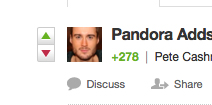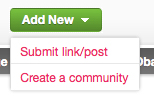Facebook has published a report on the way the Independent uses the social network to share content. The study has found people liked or shared content from the Independent 136,000 during a “recent” month.
These actions were then seen 68,845,050 times on Facebook, with a click-through rate of 0.53 per cent.
The study also found “each action through a social plugin”, such as the recommend button, has driven an average of 2.67 referrals back to the Independent. It also found Facebook referrals result in readers spending an average of seven seconds longer on a destination page.
The Independent’s success in engaging with readers using Facebook and traffic referrals form the social media site increasing by 430 per cent last year has been well documented by Journalism.co.uk. Jack Riley, the Independent’s head of digital audience and content development explained in this post and this podcast, how the Independent has created specific Facebook pages for football teams and columnists such as Robert Fisk, whose page has accumulated more than 24,000 fans.
The first stage of the implementation of the Independent’s Facebook strategy involved adding the recommend plugin at the top and bottom of the article; the second involved the creation of open graph pages for columnists and sports teams.




